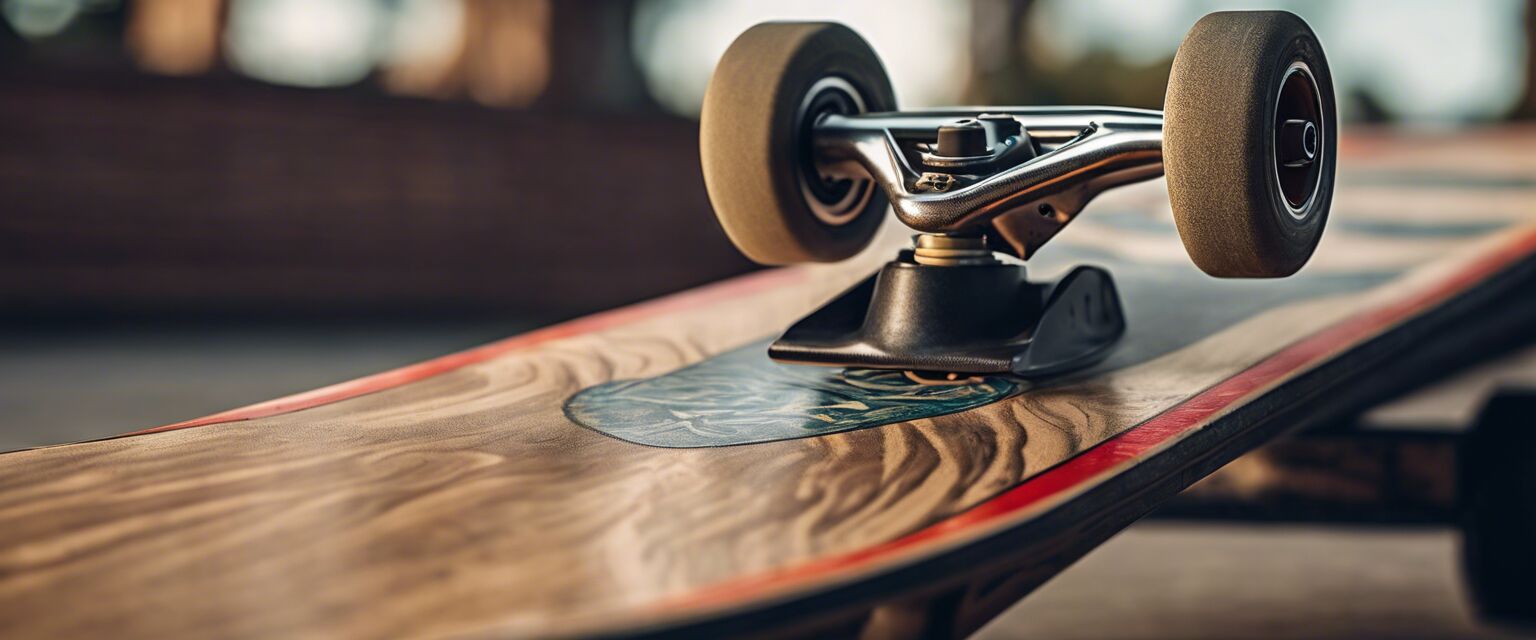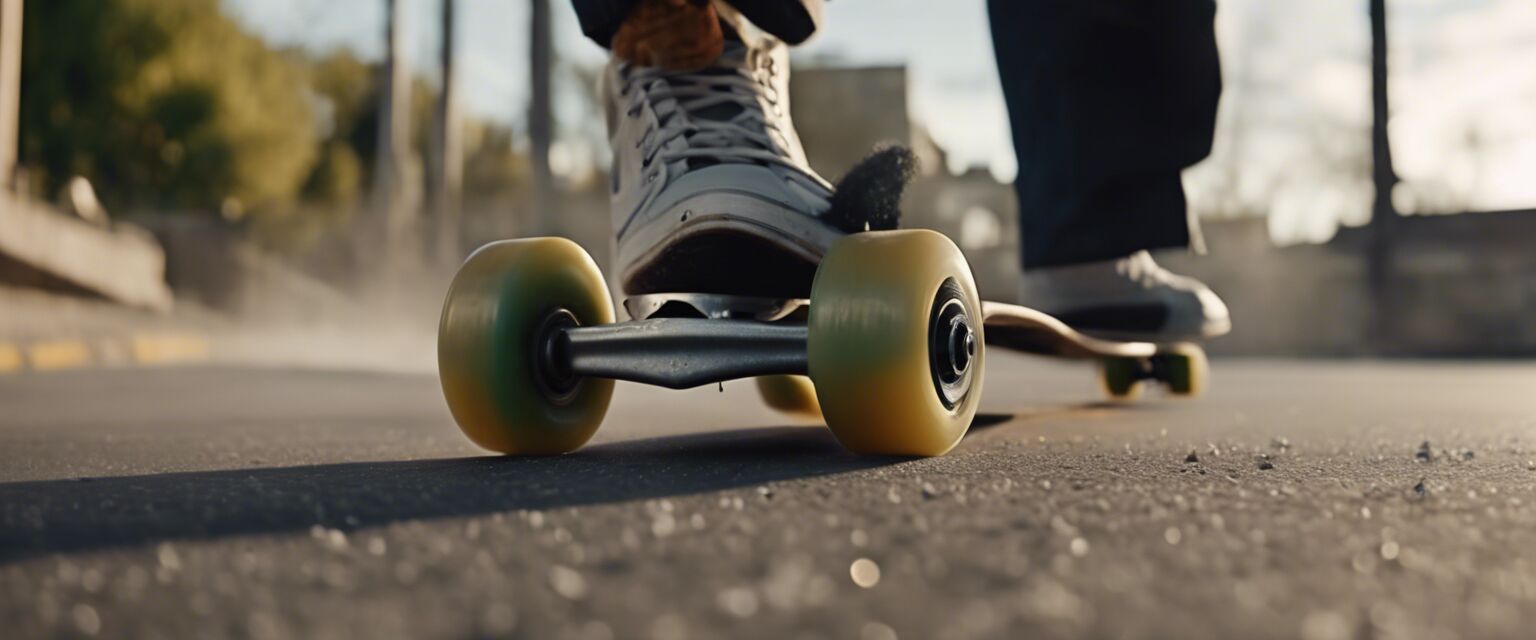
Skateboard Types
Key Takeaways
- Skateboards come in various types, each designed for specific activities.
- The main types include complete skateboards, pro skate decks, longboards, and cruiser boards.
- Understanding the purpose of each type can enhance your skating experience.
Skateboarding is not just a hobby; it's a lifestyle that has evolved significantly over the years. With different designs tailored to specific styles and activities, choosing the right skateboard can make a big difference in your performance and enjoyment. In this article, we'll explore the various types of skateboards available, their unique characteristics, and their intended uses.
Types of skateboards
Understanding the various types of skateboards is essential for selecting the right one for your style. Each type caters to different types of skating, from cruising to performing tricks. Below, we break down the common types of skateboards:
| Type | Description | Best For |
|---|---|---|
| Complete Skateboards | Ready-to-ride skateboards with assembled components. | Beginners and casual skaters. |
| Pro Skateboard Decks | High-quality decks aimed at professional skaters. | Advanced tricks and performance. |
| Longboards | Larger boards designed for stability and cruising. | Transport and downhill riding. |
| Cruiser Boards | Shorter boards great for casual rides and maneuverability. | City commuting and leisure. |
Complete skateboards
Complete skateboards are ideal for beginners or those who want a hassle-free experience. These products come pre-assembled with all necessary components, allowing skaters to hit the ground running without the need to purchase parts individually.

Benefits of complete skateboards
- Convenience: Everything is included in one purchase.
- Variety: Available in various designs to cater to individual tastes.
- Affordability: Usually more budget-friendly than buying parts separately.
Pro skateboard decks
For those looking to take their skateboarding skills to the next level, pro skateboard decks are designed for more advanced performance. These decks are usually lighter and stronger, made from high-quality materials for durability under rigorous use.

Features of pro skateboard decks
- Durability: Designed to withstand high impacts and tricks.
- Customizable: Can be paired with various components according to individual preferences.
- Lightweight: Enhances maneuverability for advanced tricks.
Longboards
Longboards are a subtype of skateboards, generally measuring more than 33 inches. They are ideal for cruising, commuting, and downhill riding due to their stability. Their longer shape provides better control, making them suitable for varying terrains.

Advantages of longboarding
- Stability: Provides a smoother ride, especially at higher speeds.
- Efficiency: Longer boards allow for greater pushing power and glide.
- Versatility: Capable of handling different skating styles and terrains.
Cruiser boards
Cruiser boards are generally shorter, making them easy to maneuver around town. They are perfect for quick trips, and their smaller size makes them great for catching up with friends or commuting to work.
Benefits of cruiser boards
- Portability: Easier to carry and store due to their compact size.
- Agility: Ideal for navigating crowded spaces with quick turns.
- Fun Factor: Riding can feel more playful and spontaneous.
Comparison of skateboard types
| Type | Length | Weight | Best Use |
|---|---|---|---|
| Complete Skateboards | Standard (28-32 inches) | Medium | General Riding & Tricks |
| Pro Skateboard Decks | Standard (7.5-8.5 inches wide) | Lightweight | Advanced Tricks |
| Longboards | Long (33-50 inches) | Varies | Cruising & Commuting |
| Cruiser Boards | Short (22-30 inches) | Light | Leisure & City Riding |
Choosing the right skateboard hinges on understanding your skating style and the environments in which you skate. Knowing the differences between skateboard types helps in making an informed decision, ensuring a better riding experience.
Beginner tips for choosing a skateboard
- Consider your skill level: If you're a beginner, start with a complete skateboard.
- Test before you buy: If possible, try out different types of skateboards at a local shop.
- Ask experts: Don’t hesitate to seek advice from experienced skaters.
For more detailed information, check our sections on complete skateboards, pro skateboard decks, skateboard bearings, and skateboard wheels. These pages provide insights into specific components that can impact your overall performance and riding experience.
Pros
- Wide variety of types for different needs.
- Improves creativity and skill development.
- Accessible for all ages and skill levels.
Cons
- Can be overwhelming choosing the right type.
- Some types may not suit everyone's preferences.
Skateboarding is as much about personal expression as it is about performance. Understanding the different skateboard types allows you to choose what best suits your needs, ensuring that your ride is both enjoyable and effective.









